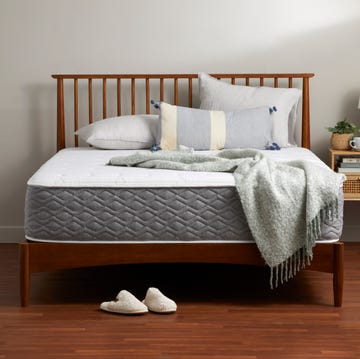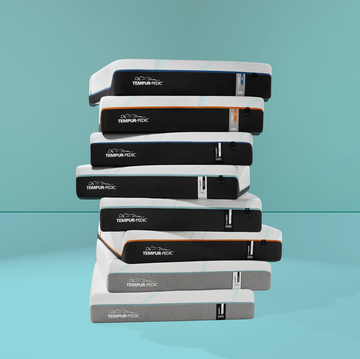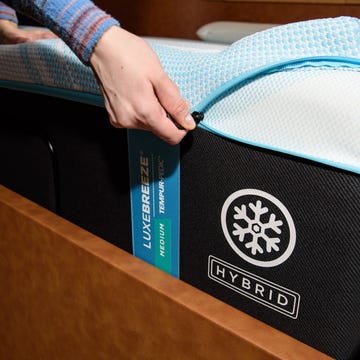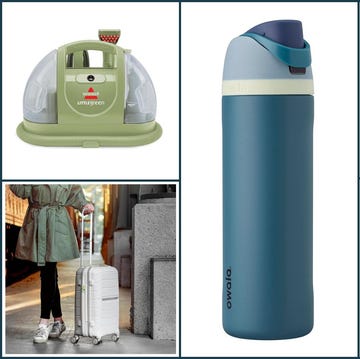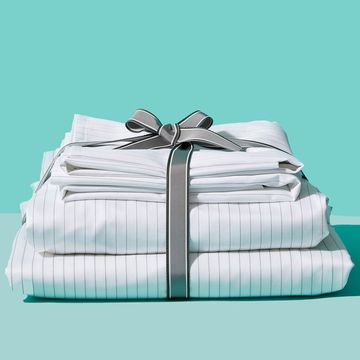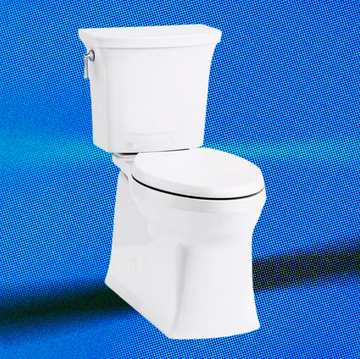Today's mattresses are not like those you'd buy 10 (or even five) years ago. Beyond the sheer quantity and variety, it's never been easier to purchase a new bed at the click of a button, thanks to the growth of online direct-to-consumer (DTC) brands over the traditional brick and mortar shops. In fact, the global mattress market is expected to grow by 6.2% every year until 2030 (last year, it was valued at 52.45 billion dollars).
But, it's also never been as expensive: In 2023, the average Queen-size mattress ranged from $1,050 to $2,050, with the hybrid mattress, which is expected to surge in popularity over the next few years, on the higher end at a whooping $2,050.
While mattresses have never been a small purchase, at some point, you have to wonder why you'll need to spend thousands on a good bed (and if it's even worth buying a new mattress at all). Why are mattresses so expensive? Since we started actively reporting on the online mattress industry 10 years ago, we've noticed a couple things. Mattresses have become more complex, both in their materials and design, and many key players have changed their brand strategies.
Reason 1: Materials & Design
Since I started covering mattresses a few years ago, I've noticed both consistent price increases (even with no obvious changes to the product) and frequent product launches, especially within the cooling, latex and luxury mattress spaces. This is likely caused by the increasing cost of mattress manufacturing and the use of advanced materials and technology, particularly in the cooling space.
While mattress manufacturing isn't the most expensive it's ever been, it's much more expensive to make a mattress than it was a few years ago, according to information from the Federal Reserve Economic Data (FRED) database. The costs of manufacturing core materials, like foam and springs, have similarly increased. A few years ago, these costs, along with supply chain issues, plagued nearly every mattress brand and slowed production despite high demand. Plus, the rate of inflation in recent years hasn't been anything to scoff at. As a result, the low supply and high demand led to higher prices, which haven't decreased while delays in shipping and fulfillment have.
Beyond the rising price of essential components, new launches need to stand out and are often more complex. Many brands have leaned into the cooling bedding market and created mattresses using everything from gel and charcoal to phase change materials (PCM). Incorporating these materials, which can cost a fair amount on their own, into a mattress, typically by infusing it in the foam, adds to the cost.
Some brands have also leaned into ergonomics and pain relief and opted for pricier materials: It's not uncommon to see, for instance, zoned coils for targeted support, which cost more than a standard coil system. Others, especially DTC brands, have created more expensive, luxury models which feature more layers of (often expensive) materials, thoughtful details and innovative design. And some have expanded to offer organic latex beds, even if they're known for foam mattresses. Latex is one of the most expensive materials when it comes to mattresses.
Reason 2: Brand Strategy
In 2014, the online mattress industry rapidly expanded. Many DTC mattress brands started popping up, one after another, and all touted the idea that they were selling their mattresses at a lower markup than traditional retailers since they had "cut out the middleman." While that idea sounds nice, it doesn't necessarily mean you'll get the best deal that way. Nowadays, many brands sell mattresses at online and in-store retailers at the same price.
Does this mean that brands weren't truthful during the initial boom? No, after all, selling one mattress directly to a consumer is different than selling hundreds or thousands of units at a wholesale price to a retailer. But it's a possibility that 10 years ago, brands could afford to take a smaller cut to stand out, whereas now, they need to sell at a higher price to maintain cash flow, especially those that have grown considerably in size.
Reason 3: Consumer Behavior & Longevity
Unfortunately, while it isn't true in every situation, sometimes a more expensive mattress, particularly one made with high quality materials, will last longer. With that belief, many consumers become willing to spend more to guarantee a long-lasting, comfortable bed. In fact, over the past few years, we've noticed that our readers are spending more on mattresses (at least, on the ones bought through our online mattress content).
They're also being more selective in their research. In the past, there was one or two clear favorites amongst many of recommendations, but now, users are divided between a good number of contenders. This selectivity may even inspire brands to hone in on a certain niche, which means tailoring their mattresses and marketing to a specific audience.
When should you replace your mattress?
While there isn't a definitive "expiration date" on your mattress, you should expect a good one to last at least 8 to 10 years, depending on the type of mattress. Instead of following a strict timeline, look for warning signs — like indents or lumps — that indicate that it's time for a replacement. Also watch out for consistent difficulty sleeping or pain upon waking. For any concerning chronic pain, we recommend speaking to a medical professional.
The Bottom Line: What Should You Do?
If you're in the market for a new mattress, I'd ultimately recommend saving up for a nicer bed and keeping an eye out for any sales, particularly during holiday weekends like Presidents' Day, Memorial Day, July 4th, Labor Day and Thanksgiving (i.e. Black Friday and Cyber Monday).
Our evaluations show that a good mattress typically costs between $1,000 and $2,000 for a Queen-size model. If that's not in the cards at the moment, you could instead invest in a nice mattress topper, which, while considerably cheaper (typically between $200 and $300) than a new mattress, can help revitalize your bed. Several of our consumer testers, including some with sagging mattresses, noted that a topper helped tremendously in improving their sleep quality. On the other hand, if you need a bed now, a cheaper mattress can still be comfortable to sleep on, even if it won't necessarily last as long.
Still, make sure to do your research and check out any sleep trials and return policies before purchasing a new bed. There's no one mattress that works for every type of sleeper, and you want to make sure you've got the best mattress for your body and sleep style. All the research in the world won't compare to actually sleeping on it yourself.
Tips for extending your purchase
Regardless of what you choose, you'll want to make sure your mattress lasts. We recommend:
- Using a mattress protector to protect it from things like allergens, dust, spills and wear and tear.
- Rotating your mattress periodically so you aren't always sleeping in the same spot.
- Cleaning your mattress every few months to keep it fresh.
Why trust Good Housekeeping?
At the Good Housekeeping Institute Textiles Lab, we've been actively researching, analyzing and reporting on mattresses for over 10 years since the rapid expansion of the online mattress industry in 2014. Our expert scientists and engineers have:
✔️ Researched hundreds of new models, including deep dives into materials, design, customer service and online reviews.
✔️ Leveraged our backgrounds in fiber science, materials engineering and consumer science.
✔️ Interviewed medical professionals and kept up with relevant literature and sleep studies.
✔️ Surveyed more than 10,000 GH panelists for answers to a total of over 170,000 questions* on mattresses they own.
✔️ Worked with hundreds of at-home consumer testers to evaluate hundreds of mattresses long-term.
✔️ Visited mattress factories and showrooms and met with various brands, from CEOs to product experts.
*In recent years only; not counting previous historical survey data.
I've personally been at GH since 2022 and currently oversee all mattress testing, including reviewing feedback from thousands of users. In the past year alone, my colleagues and I have evaluated over 150 mattresses with the help of consumer testers. Plus, I'm constantly keeping an eye out for new innovations and trends.
Mattress guides to consider
- Best Mattresses
- Best Mattresses in a Box
- Best Online Mattresses
- Best Cheap Mattresses
- Best Luxury Mattresses
- Best Soft Mattresses
- Best Firm Mattresses
- Best Mattresses for Back Pain
- Best Mattresses for Side Sleepers
- Best Mattresses for Stomach Sleepers
- Best Pillow-Top Mattresses
- Best Memory Foam Mattresses
- Best Hybrid Mattresses
- Best Hybrid Mattresses in a Box
- Best Innerspring Mattresses
- Best Cooling Mattresses
- Best Organic Mattresses
- Best Latex Mattresses
- Best Mattresses for Heavy People
- Best Smart Mattresses
- Best Mattresses for Adjustable Beds
- Best Split King Mattresses
Grace Wu (she/her) is a product reviews analyst at the Good Housekeeping Institute's Textiles, Paper and Apparel Lab, where she evaluates fabric-based products using specialized equipment and consumer tester data. Prior to starting at Good Housekeeping in 2022, she earned a master of engineering in materials science and engineering and a bachelor of science in fiber science from Cornell University. While earning her degrees, Grace worked in research laboratories for smart textiles and nanotechnology and held internships at Open Style Lab and Rent the Runway.


